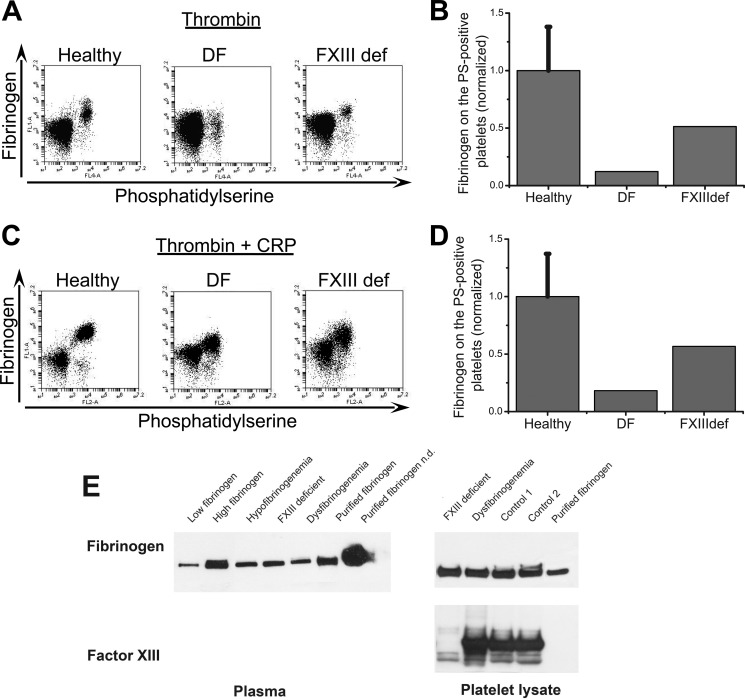FIGURE 5.
Testing the formation of fibrin(ogen) cap using platelets from patients with inherited bleeding disorders. A and B, platelets from healthy donors and patients were activated at 20,000 μl−1 with 100 nm thrombin for 15 min, labeled with fluorochrome-labeled annexin V and anti-fibrinogen antibody, and analyzed by flow cytometry. Abbreviations are as follows: healthy, healthy donors; DF, dysfibrinogenemia; FXIIIdef, factor XIII deficiency. A, dot plots represent binding of anti-fibrinogen antibody versus annexin V for platelets from healthy donor and patients stimulated at 20,000 μl−1 with 100 nm thrombin. B, the quantity of fibrin(ogen) on the surface of the PS-positive platelets from dysfibrinogenemia patient is significantly decreased, whereas the PS-positive platelets from patient with factor XIII deficiency had normal fibrin(ogen) retention. C, same as in A, except for activation with 100 nm thrombin plus 20 μg/ml CRP. D, the same as in B, except for activation with 100 nm thrombin plus 20 μg/ml CRP. All results were normalized on the value of fluorescence of anti-fibrinogen antibody bound to the fibrin(ogen) on the surface of PS-positive platelets from healthy donors obtained by thrombin alone stimulation. The data for healthy donors are means ± S.D. for n = 3 experiments with platelets from different donors. E, total levels of fibrinogen and fXIII in patient plasma and platelet lysates determined by Western blotting. Additional samples are as follows: low fibrinogen, a patient with low plasma fibrinogen (<1 mg/ml); high fibrinogen, a patient with high plasma fibrinogen (>10 mg/ml); hypofibrinogenemia; purified fibrinogen; healthy controls.

